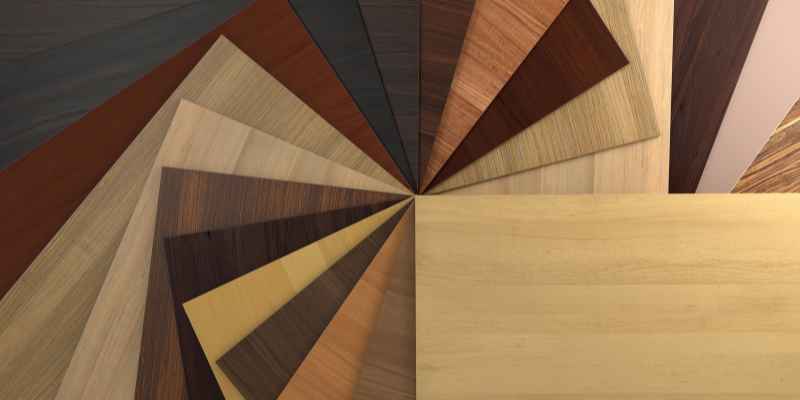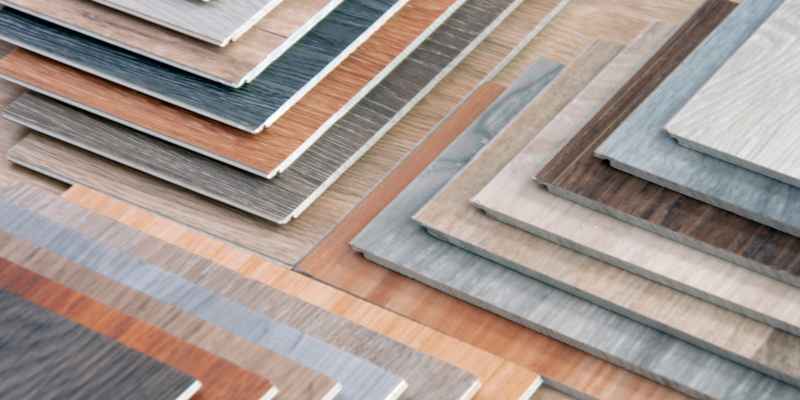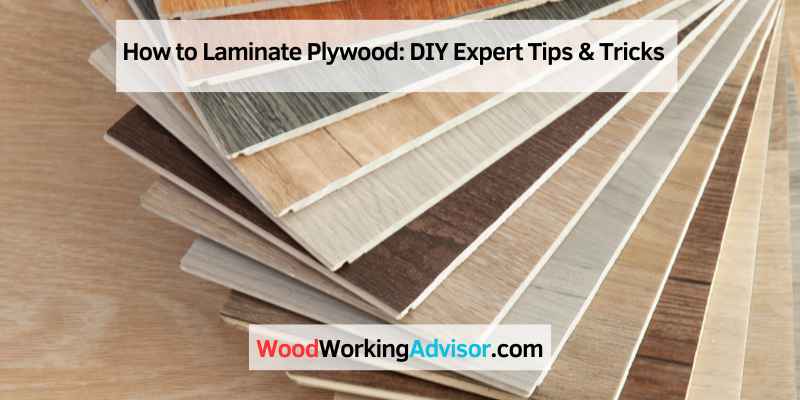To laminate plywood, apply adhesive to plywood, place laminate on top, then trim edges for a smooth finish. Laminating plywood is a practical way to enhance its durability and aesthetic appeal.
By adhering a layer of laminate to the surface, you can protect the wood from damage and create a sleek, professional look. Whether you are working on a DIY project or a professional construction job, knowing how to laminate plywood properly is essential.
In this guide, we will explore the step-by-step process of laminating plywood, including the materials needed and the techniques to achieve a flawless finish. Let’s dive in and learn how to laminate plywood like a pro!
Introduction To Plywood Lamination
Learn the art of plywood lamination by applying adhesive and pressure to bond layers together, creating a durable composite material. Master the technique for laminating plywood to enhance its strength and versatility for various woodworking projects.
Plywood lamination is a technique of bonding thin layers of wood veneers together to create a strong, durable, and attractive panel. It involves gluing two or more pieces of plywood together to increase thickness or enhance the strength of the panel. This technique is widely used in the construction of furniture, cabinets, doors, and flooring.
The Basics Of Lamination
The process of plywood lamination involves the following steps:
- Cut the plywood sheets to the desired size and shape.
- Apply a thin layer of adhesive to the surface of the plywood sheets.
- Place the sheets together and clamp them tightly.
- Allow the adhesive to dry and cure for the recommended period.
- Remove the clamps and sand the surface of the panel to achieve a smooth finish.
Benefits Of DIY Plywood Lamination
There are several benefits of laminating plywood yourself, including:
- Cost savings: Laminating plywood yourself is often less expensive than buying pre-laminated plywood.
- Customization: You can choose the type of wood veneers, adhesive, and thickness that suits your needs.
- Control: You have greater control over the lamination process, ensuring that the panel is strong and durable.
- Creativity: You can create unique patterns and designs by combining different wood veneers.
- Environmentally friendly: Laminating plywood yourself reduces waste and promotes sustainability.
In conclusion, plywood lamination is a useful technique for enhancing the strength and durability of plywood panels. By following the basic steps and benefits of DIY plywood lamination, you can create strong and attractive panels that meet your specific needs.
Materials And Tools Required
When it comes to laminating plywood, having the right materials and tools is essential for a successful project. Whether you’re looking to enhance the appearance or durability of your plywood, selecting the appropriate materials and tools is crucial. In this guide, we’ll walk you through the materials and tools required for laminating plywood, including choosing the right plywood, selecting laminates, and the essential tools for the job.
Choosing The Right Plywood
Plywood is available in various grades and types, each suitable for different applications. When choosing plywood for lamination, consider the intended use and the desired finish. Select a high-quality plywood that is smooth and free from defects for the best results.
Selecting Laminates
Laminates come in a wide range of colors, patterns, and finishes, allowing you to customize the look of your plywood. Ensure the laminate is compatible with the adhesive you plan to use and consider the level of durability required for your project.
Essential Tools For The Job
- Adhesive: Choose a high-quality, waterproof adhesive suitable for bonding laminate to plywood.
- Roller: A roller ensures proper adhesion of the laminate to the plywood surface.
- Trimming Tools: Trim the excess laminate with precision using a sharp utility knife or laminate trimmer.
- Sanding Tools: Sand the edges and surfaces of the laminated plywood for a smooth finish.
Preparation Steps

Before you start laminating plywood, it’s important to follow a few key preparation steps to ensure a successful outcome. These steps include surface cleaning, measuring and cutting, and safety considerations. By taking the time to properly prepare, you can ensure that your laminated plywood project turns out beautifully and lasts for years to come.
Surface Cleaning
Before laminating plywood, it’s crucial to clean the surface thoroughly. This will help remove any dirt, dust, or debris that could affect the adhesion of the laminate. Start by using a soft cloth or sponge to wipe down the entire surface of the plywood, removing any loose particles.
If there are any stubborn stains or residue, you can use a mild detergent mixed with water to gently scrub the surface. Be sure to rinse the plywood thoroughly with clean water and allow it to dry completely before proceeding with the lamination process.
Measuring And Cutting
Precision is key when it comes to laminating plywood, so taking accurate measurements and making clean cuts is essential. Start by measuring the dimensions of the plywood sheet and the laminate you will be using. Make sure to account for any overlapping or trimming that may be required.
Using a straightedge and a sharp utility knife, carefully cut the laminate to the appropriate size. It’s important to make smooth, even cuts to ensure a seamless finish. Take your time and double-check your measurements before proceeding.
Safety Considerations
When laminating plywood, it’s important to prioritize safety. Always wear appropriate protective gear, such as gloves and safety goggles, to protect yourself from any potential hazards. Additionally, make sure you are working in a well-ventilated area to avoid inhaling any fumes from adhesives or solvents.
Take extra caution when using sharp cutting tools and ensure that they are properly stored and handled. Keep children and pets away from your work area to prevent accidents. By following these safety considerations, you can complete your laminating project without any unnecessary risks.
Adhesive Application Techniques
When it comes to laminating plywood, applying the adhesive correctly is crucial for a successful and durable result. In this section, we will discuss the different types of adhesives commonly used for laminating plywood, how to apply the adhesive evenly, and the common mistakes to avoid.
Types Of Adhesives
There are various types of adhesives available for laminating plywood. Here are some commonly used options:
- Epoxy Resin: This adhesive provides excellent bonding strength and is resistant to moisture, making it suitable for outdoor applications.
- Polyurethane Glue: Known for its strong bond and flexibility, polyurethane glue is ideal for laminating plywood that may undergo structural movements.
- Contact Cement: This adhesive is easy to apply and dries quickly. It is commonly used for laminating large surfaces.
Applying Adhesive Evenly
To achieve a smooth and even lamination, follow these steps when applying the adhesive:
- Clean the surface: Ensure that the plywood surface is clean and free from dust or debris.
- Prepare the adhesive: Follow the manufacturer’s instructions to prepare the adhesive, whether it requires mixing or is ready to use.
- Apply the adhesive: Use a brush, roller, or spreader to apply the adhesive evenly on both the plywood and the laminating material.
- Allow for open time: Some adhesives require an open time before bonding. Follow the instructions to determine how long you should wait.
- Press and clamp: Once the adhesive is applied, carefully align the laminating material with the plywood and use clamps or weights to ensure a strong bond.
Avoiding Common Mistakes
Here are some common mistakes to avoid when laminating plywood:
- Insufficient adhesive: Ensure that you apply enough adhesive to create a strong bond between the plywood and the laminating material.
- Uneven application: Take your time to apply the adhesive evenly to avoid any bumps or gaps in the lamination.
- Improper clamping: Use adequate pressure when clamping the laminated plywood to ensure a secure bond. Avoid over-clamping, as it can squeeze out excess adhesive.
- Not allowing enough curing time: Follow the adhesive manufacturer’s instructions regarding curing time to ensure the lamination sets properly.
Aligning And Pressing The Laminate
When laminating plywood, the process of aligning and pressing the laminate is crucial to ensure a smooth and durable finish. Proper alignment and pressure application are essential for achieving professional results. Additionally, allowing sufficient curing time is necessary to ensure a strong bond between the plywood and the laminate.
Alignment Tips
1. Clean the plywood surface thoroughly to remove any dust or debris that could affect the alignment.
2. Apply a thin and even layer of adhesive to the plywood, ensuring complete coverage.
3. Align the laminate carefully, starting from one edge and gradually smoothing it out to the opposite edge to avoid air bubbles.
Pressure Application
1. Use a roller or a laminate press to apply uniform pressure across the surface of the laminate, ensuring proper adhesion.
2. Pay special attention to the edges and corners, applying extra pressure to ensure they are securely bonded to the plywood.
Curing Time
1. Allow the laminated plywood to cure for the recommended time as per the adhesive manufacturer’s instructions.
2. Avoid subjecting the laminated plywood to any stress or load during the curing period to prevent damage to the bond.
Trimming And Finishing Touches
When it comes to laminating plywood, the final steps involve trimming and finishing touches. These steps are crucial for achieving a professional and polished look.
Trimming Excess Laminate
- Carefully trim excess laminate using a sharp utility knife.
- Ensure the edges are smooth and flush with the plywood surface.
- Trim with light, even pressure to avoid chipping or splintering.
Sanding For Smoothness
- Use fine-grit sandpaper to sand the edges for a smooth finish.
- Sand in a circular motion to blend the laminate with the plywood.
- Check for any rough spots and sand until the surface is uniform.
Final Inspection
- Inspect the laminated plywood for any imperfections or rough edges.
- Ensure all edges are properly trimmed and sanded to perfection.
- Make any necessary touch-ups before considering the project complete.
Maintenance And Care
Proper maintenance and care are essential to ensure the longevity of laminated plywood surfaces. By following these simple steps, you can keep your laminated surfaces looking pristine for years to come.
Cleaning Laminated Surfaces
- Use a mild soap and water solution for regular cleaning.
- Avoid harsh chemicals that can damage the laminate.
- Wipe dry with a soft cloth to prevent water spots.
Repairing Scratches
- Fill minor scratches with a laminate repair paste.
- For deeper scratches, consult a professional for repair.
Long-term Care Tips
- Avoid placing hot items directly on the surface.
- Use coasters or placemats to protect against scratches and stains.
- Regularly check for any signs of wear and tear.
Advanced Techniques And Creative Ideas

Discover advanced techniques and creative ideas for laminating plywood to enhance durability and aesthetics. Explore innovative methods for applying laminate sheets and incorporating unique designs to elevate your woodworking projects. Achieve professional results with these expert tips and take your plywood laminating skills to the next level.
Incorporating Patterns
Adding intricate designs to laminated plywood can enhance visual appeal.
Using Lamination For Curved Surfaces
Laminating plywood allows for flexibility in shaping around curves.
Diy Project Inspirations
Create unique furniture pieces with laminated plywood for personalized touch.
Exploring innovative methods in laminating plywood can elevate your projects.
Frequently Asked Questions
How Do I Prepare Plywood For Lamination?
To prepare plywood for lamination, start by sanding the surface to remove any roughness. Then, clean the plywood to ensure there is no dust or debris. Apply a coat of primer to the plywood and allow it to dry completely before proceeding with the lamination process.
What Type Of Adhesive Is Best For Laminating Plywood?
For laminating plywood, it’s best to use a high-quality wood glue or resin adhesive specifically designed for laminating purposes. These adhesives provide strong bonding and are suitable for plywood lamination projects, ensuring a durable and long-lasting finish.
Can I Laminate Plywood Without Professional Equipment?
Yes, it’s possible to laminate plywood without professional equipment. Using basic tools such as a roller, brush, and clamps, along with proper adhesive and technique, you can achieve successful plywood lamination at home. However, ensure to follow safety measures and instructions for best results.
What Are The Advantages Of Laminating Plywood?
Laminating plywood enhances its durability, water resistance, and overall strength. It also provides an attractive finish and protects the wood from wear and tear, making it suitable for various applications such as furniture, cabinetry, and decorative surfaces.
Conclusion
Laminating plywood is a great way to strengthen and protect wood surfaces. By following the step-by-step process, you can easily achieve a professional-looking result. Remember to choose the right type of laminate and adhesive for your project, and take your time to ensure a smooth and even finish.
With these tips, you can laminate plywood with confidence and enjoy the benefits of a durable and long-lasting surface.

